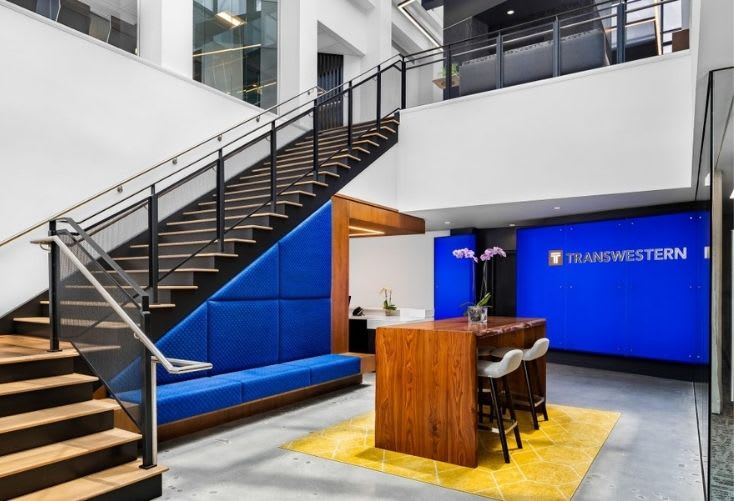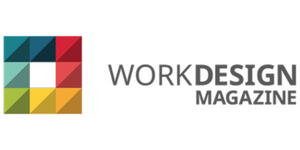- “Whimsical” workplace amenities like ping-pong tables are out. Instead, workers want to feel an emotional connection with their environment.
- This can be achieved through physiologically enticing design elements such as biophilia, flexibility of choice, and natural daylight.
- Cooper Carry’s Brian Parker shares ideas on how to spark an emotional connection with the workplace, to help attract and retain employees.
This article was written by Brian Parker and was originally published on Work Design Magazine.
Gone are the days of ping-pong tables and nap pods as recruits and interview candidates seem no longer wowed by these “whimsical” workplace amenities. Instead, “invisible” design elements are taking the lead, sparking an emotional connection between a job candidate and the workplace with intangible physiologically enticing design elements such as biophilia, flexibility of choice and natural daylight. Invisible design is what a person feels when they walk into a space, and not necessarily what they see. As soon as a candidate walks into a potential workplace, they will imagine themselves in that work environment and determine if it feels like a place where they can be motivated, creative and collaborative. Money and benefits aside, sometimes it is as simple as that gut feeling that you have found the right place.
According to CNBC, one in four workers quit their jobs in 2021. Employers are increasingly seeking ways to attract and retain talent, and one way to do that is by taking a hard look at the work environment. After a hiatus from being in-office, employers cannot simply unlock the door, clean up the cobwebs and expect new or even existing employees to jump back into what worked over two years ago. They must examine their values as a company in order to create a space that employees can be proud of, and prospective employees can be in awe of, compelling them to take the job.
Workplace design isn’t just about what works in the current moment, designers and employers must look ahead to the next generation of office workers to anticipate their needs. Here a few things to keep in mind when designing a workplace which invokes a feeling in someone, to help attract and retain employees:

1. Amplifying a company’s personality
As the job market continues to be competitive, amplifying the personality of a company’s office space through design can be the tipping point in an interviewee’s decision to take the next step in their career. Applicants may be visiting 3-4 offices in one week, and workplace design is crucial in establishing a positive, lasting impression and emotional connection to a space.
Branding and culture are important, as they reflect the story of a company, what its values are and what its purpose is. Whether it be the colors of the walls, the etching of the logo on the front door or the type of furniture used, a company’s brand can leave a lasting impression. For existing employees, it creates a sense of camaraderie and collaboration, where they feel a part of something larger.
As one example, Transwestern’s new Southeast regional headquarters utilizes its signature blue color throughout the space and illuminates the logo to enhance the arrival experience. Guests are immediately aware of whose office space they are walking into and can instantly understand its values of being an approachable, bright and modern workplace.
2. Designing equitable spaces
Diversity, equity and inclusion is on the forefront of the design decision making process, especially when considering the future workforce. Potential employees want to be certain they are working in an environment where their voices will be heard. Windowless doors and private offices can create an unwelcoming feeling, while glass walls produce visual transparency, showcasing that a company has nothing to hide. Moving away from hierarchical seating arrangements, whether it be in the conference room or with personal desk spaces, keeps everyone on the same playing field.
We also anticipate seeing more equitable conference rooms and collaboration spaces post-Covid, with new table geometries instead of the usual rectangular, chairs equally spaced and no end seats. With the rise of hybrid work, ensuring there is a hypothetical “seat” for everyone at the table either virtually or in-person, will cultivate a more inclusive culture. While this can be done through mobile technology and individual cameras and screens, technology is advancing every day and we foresee developments in producing more equitable hybrid meetings in the near future. In fact, CNBC reports that within five years, employees may be able to meet via hologram in the Metaverse instead of through a typical video call.
Recognizing that employees have varying psychological needs throughout the workday is also important in designing equitable spaces to attract new talent. Community rooms, amenities and huddle spaces are not just so employees can be generally comfortable, but can also be used to respond to the energy levels of employees throughout the day. Hybrid work has led employees to redefine their spaces and where they feel the most productive, and this variety in workspace choice should be provided in every workplace environment, too.

3. Health and wellness
Elements like biophilia, flex spaces and natural light are not always immediately noticed by the naked eye, but can help create a wellness-focused environment that makes candidates feel valued.
By utilizing greenery and natural light throughout a space, an interviewee can sense what the company’s values are. An employer wearing wellness on their sleeve showcases that they care about their employees’ wellbeing. Creating a variety of outdoor spaces with private areas to escape crowds and the monotony of a desk also invokes a sense of autonomy. Having these wellness-focused design elements and areas demonstrates that an employer prioritizes their employees, which is exactly what an interview candidate may be looking for in their next career step.
For the brand new office tower at Atlanta-based mixed-use hub Midtown Union, this means floor-to-ceiling windows allowing natural light to pour into the lobby and flexible suites, plant fauna scattered throughout gathering areas, a 12,000-square-foot outdoor amenity terrace called “The Yard” on the eighth floor as well as elevated landscape decks offering alternative meeting space and open-air work stations.
An interviewee’s first impression of their potential employer does not boil down to a handshake; it is made as soon as they walk through the front door. Designing a workplace that embodies the values of the company can ultimately be the deciding factor in their decision for the next step of their career. Showcasing a company’s personality, devotion to DEI policies and health and wellness of their employees can be not only heard, but shown through thoughtful workplace design, and invoke an emotional connection among the next generation entering the workforce.


 Dr. Gleb Tsipursky – The Office Whisperer
Dr. Gleb Tsipursky – The Office Whisperer Nirit Cohen – WorkFutures
Nirit Cohen – WorkFutures Angela Howard – Culture Expert
Angela Howard – Culture Expert Drew Jones – Design & Innovation
Drew Jones – Design & Innovation Jonathan Price – CRE & Flex Expert
Jonathan Price – CRE & Flex Expert












